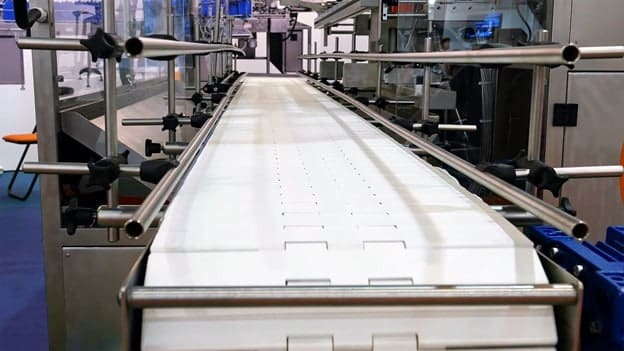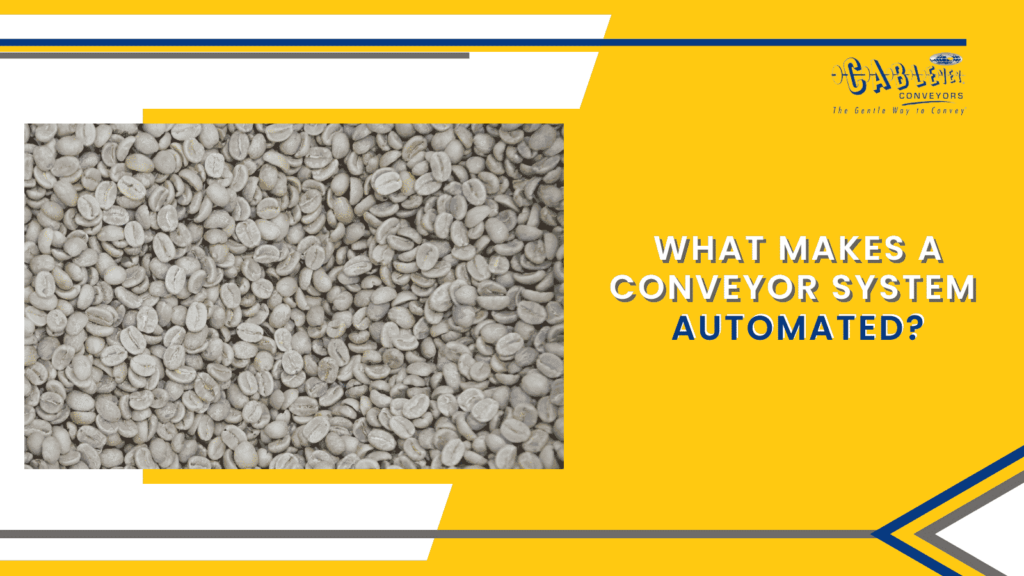Unravel what makes a conveyor system automated and its key principles and features that propel industries forward. Discover how these systems, equipped with cutting-edge technology, redefine efficiency, accuracy, and safety in material handling. Explore the innovative landscape where the synergy of machinery and automation converges, shaping the future of conveyor systems.
What Makes A Belt and Tubular Conveying System Automated?
An automated conveyor system utilizes advanced technology to mechanize material handling operations, minimizing or eliminating the need for human intervention. It employs features such as automatic loaders, sensors, and a conveying control system to streamline tasks like sorting, loading, unloading, and maintenance. The core aim is to enhance productivity, ensure workplace safety, and elevate product quality in manufacturing processes.
In other words, automation refers to using technology to perform a task that a human would otherwise perform. In the case of tubular conveyor and conveyor belt systems, factory automation can refer to the use of sensors, bar code readers, weight sensors, RFID tags, camera systems, and other technologies to track materials’ movement and perform tasks such as maintenance and inventory management.
The Evolution of Conveyor Manufacturing
Some of the first belt conveyor manufacturers appeared in the 18th century, with the inception of the first conveyor belts crafted from leather or canvas and reinforced by wooden frames. Initially, these basic hand-operated conveyors found their primary use in transporting coal and minerals within mines and factories. The transition to the early 20th century marked a significant evolution as steel supplanted the initially delicate materials.
This transformation substantially elevated the weight capacity and speed of the conveyor belts, enabling them to efficiently transport heavy loads over extended distances and at increased speeds. In the present day, a conveyor belt system boasts a diverse array of materials handling, and even conveyors deviate from the traditional belt shape or function. It’s challenging to envision an assembly line or warehouse without some form of conveyor solution. Moreover, the surge in robotics has led to a growing trend of automation in conveyor systems.

Principles of Material Handling With Industrial Conveyor Systems
While there are no strict rules for conveyor technologies and material handling, there are ten principles set forth by the College Industry Council on Material Handling Education (CICMHE) together with the Material Handling Institute. These principles are the result of decades of research in the field of ergonomics and material handling, and they include:
- Planning principle,
- Space utilization principle,
- Work principle,
- Life cycle cost principle,
- Ergonomic principle,
- Unit load principle,
- Environmental principle,
- Standardization principle
- Automation principle,
- System principle.
The Role of Automatic Conveyor System in Material Handling
The automation principle stipulates that material handling operations should be automated or mechanized wherever possible to improve productivity, workplace safety, and product quality. In other words, it should be if a task can be done without human intervention (or with very little human intervention).
This is where manufacturing conveyor systems come in. Conveyors can automate many tasks that would otherwise have to be done by hand, such as sorting, loading and unloading, and more. In addition, they can improve safety by keeping workers away from dangerous tasks or areas. Let’s look at which segments of conveying materials in the manufacturing process can be automated.
Revolutionizing Material Handling – Automation in Loading and Unloading Processes
Loading materials onto a conveyor system used to be done entirely by hand. Today, however, there are many conveyor systems that come with automatic features. These features include:
- Automatic Loaders
These loaders attach to the conveyor and can be programmed to load materials at a specific rate. They are often used with sensors that tell the loader when the conveyor is full.
- Automatic Unloaders
These unloaders can be programmed to release materials at specific intervals, making them ideal for tasks such as packaging or labeling.
- Infeed and Outfeed Tables
Infeed and outfeed tables can be used to load and unload materials onto a conveyor system automatically. The infeed table is used to load the materials onto the conveyor, while the outfeed table is used to empty the materials from the conveyor.
Precision in Motion – Automating Sorting Tasks With Conveyor Systems
Another task that can be automated with conveyor engineering is sorting. This is often done with sensors that are placed along the conveyor. The ideal type of conveyor for sorting is a belt conveyor system or a roller conveyor, as it can be equipped with sensors that can detect the presence of an object on the belt.
Once the object is detected, the conveyor can be programmed to sort it into the correct category. This means that facility workers no longer have to spend time sorting materials by hand. Instead, they can focus on other tasks, such as quality control.

Streamlining Operations – Automation in Labeling and Packaging With Conveyor Systems
Labeling and packaging are two more tasks that can be automated with a conveyor system. A conveyor cannot label or package materials on its own, but it can be used in conjunction with a labeling or packaging machine.
For example, a product that needs to be labeled can be fed into a labeling machine by a conveyor. Once the product is marked, the conveyor can move it to the packaging machine. The same process can be used for products that need to be packaged.
Dynamic Control – Automation in Speed, Start-Stop, and Directional Changes
Increasing or decreasing the conveying speed, stopping and starting the conveying system, and changing the direction of the conveying system are all tasks that can be automated. They can be pre-programmed into the conveyor system or motor, or they can be controlled by an operator.
In terms of controls, there is a wide range of alerts and alarms that can be automated with a conveyor system. For example, an operator can be alerted if the conveyor is overloaded or if there is an obstruction on the belt or in the conveyor tube. In addition, an alarm can be set to go off if the conveyor system is not working properly. This helps to ensure that the system is always operating at peak efficiency.
Optimizing Efficiency – Harnessing Performance Data in Conveyor Systems
In order to understand how a conveyor system performs, it is important to track its performance data. This data can improve the system’s efficiency and troubleshoot any problems that may arise.
Some of the performance data that can be tracked include:
- Speed – How fast the conveyor is moving materials,
- Distance – How far the conveyor is moving materials,
- Belt or tube load – The amount of material that is on the belt or in the tube.
This data can be tracked manually or automatically. Automated tracking is often done with sensors that are placed along the conveyor. These sensors can track the performance data in real-time, which is helpful for instantly addressing any issues that might occur.
It is also possible to track the performance data of an automated conveyor system over time. Typically, some type of software is in charge of automated tracking, a program designed specifically for this purpose. This software can be used to generate reports that show the performance of the conveyor system over time. This data can be used to improve the system’s efficiency and identify any trends that may emerge.
Efficiency Beyond Operation – Automated Maintenance in Conveyor Systems
Some conveyor systems are equipped with automated maintenance features. These features can be used to perform tasks such as lubricating the conveyor belt or cleaning the conveyor tubes.
For example, Cablevey Conveyors utilizes a pneumatic tensioning device to ensure that the cable in our conveyors is properly tensioned. This device allows an operator to easily and quickly adjust the tension on the line, which helps to extend the life of the conveyor.
In addition, our conveyors are equipped with a self-cleaning feature that helps to keep the tubes clean and free of debris. Cleaning conveyor belts is an important feature, as it helps to ensure that the conveyor system is contamination and germ-free.

Explore All Additional Features
Conveyor systems can also be equipped with additional features that make them even more automated. These features include:
- Bar code readers – Bar code readers can track the movement of materials through a facility. This information can be used to improve inventory control and management.
- Weight sensors – Weight sensors can be used to weigh materials as they are being conveyed. This information can be used to track the movement of materials through a facility and calculate the shipping cost.
- RFID tags – RFID tags can track the movement of materials through a facility. This information can be used to improve inventory control and management.
- Camera systems – Camera systems can monitor the conveyor system and the materials being conveyed. This information can be used to improve safety and track the movement of materials through a facility.
Cablevey Conveyors Is One of the Conveyor Systems Manufacturers That Provides Total Automation
Automated conveyor systems are gaining popularity across diverse industries, presenting several advantages compared to manual counterparts. These benefits encompass heightened efficiency, improved accuracy, and enhanced safety measures. Moreover, these automated systems have the flexibility to be equipped with various features, further enhancing their convenience and overall efficiency.
For those seeking a conveyor system that goes beyond the conventional, inquire about the available automation features. Whether it’s incorporating tubular conveyor or belt conveyor systems or ensuring meticulous conveyor installation supervision, Cablevey Conveyors stands ready to provide cutting-edge solutions that save both time and money. Contact us today to explore the world of advanced and automated conveyor systems tailored to your specific needs.






